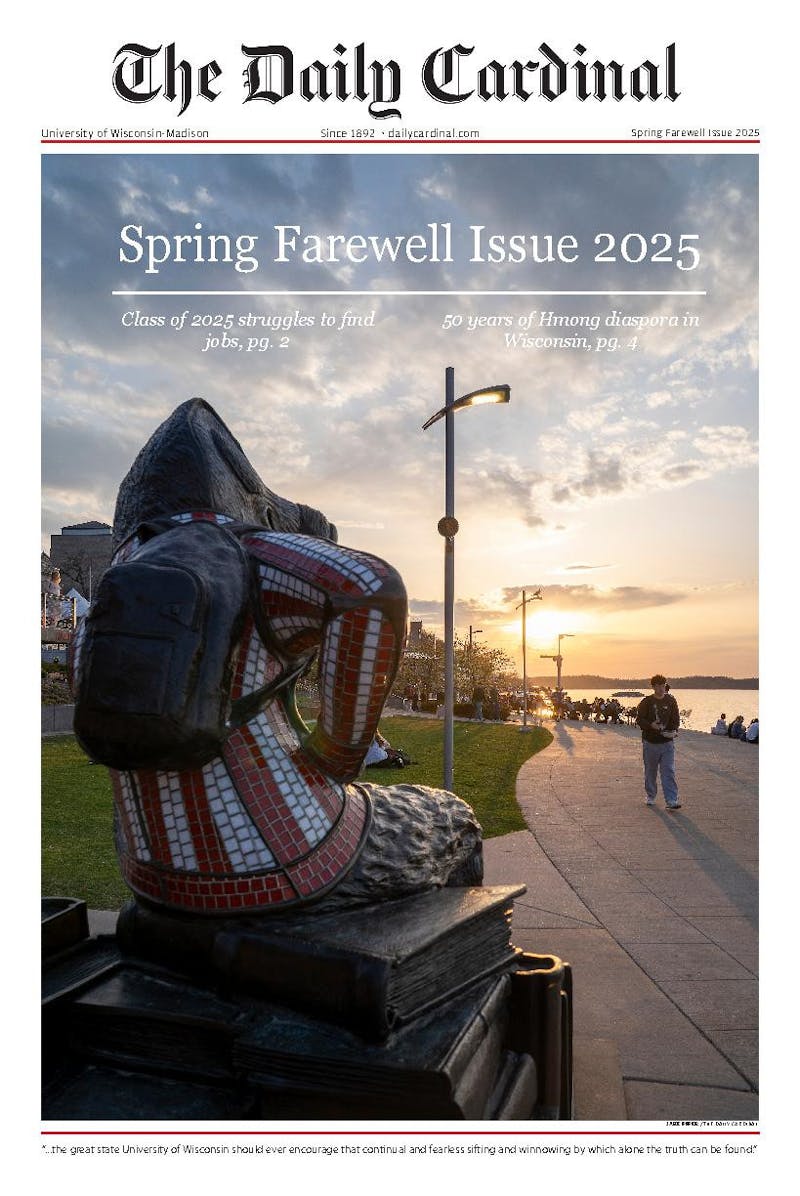Approaching City Hall this past Monday to vote early in this year's presidential election, I was initially repulsed by what I saw. Foolishly thinking that going at 3 p.m. would rid me of the early voter rush due to classes, I was unpleasantly surprised to see the line snaking outside to the bottom of the steps.
My impatience grew quickly, and I could not erase any hint of irritation as I slowly treaded through each section of the municipal building. This feeling of boredom and threat of doom that I would never get out of Madison City Hall alive suddenly vanished, though, when I thought of what such a crowd implied.
The two-hour wait that I ended up going through, which was a day before the actual election, signified a wave of regard and concern for the state of our country. It symbolized the unity of our students, not in relation to partisanship, but in relation to how much they care about the next four to eight years. With this in mind, I then thought back to our impressive political history, looking back even as recently as 41 years ago to the age of the Dow Chemical protest, and the political trademark this great university earned in recognition for being the most active campus in the nation alongside the likes of UC-Berkley.
Although there have been messages over the past few decades about our school's level of activism falling below that of the counter-culture generation's - most notably in a UW-Madison student-created documentary Youthanized,"" I strongly believe that this campus proved itself through the months of a very rigorous campaign to undoubtedly be in the top tier of schools where politics are a priority.
With such a key election taking place, this campus was under a lot of necessary pressure to make a political impact. Although political apathy is always a concern among college students, UW-Madison once again did everything that it could to keep itself from joining that category - and it succeeded. During the 2004 election, the Deputy clerk Sharon Christensen said that a 90 percent voter turnout wasn't out of the question after 30 percent of registered voters arrived at the polls by 11 a.m. Based on the political activity I've seen, 90 percent voter turnout, while unlikely, shouldn't be ruled out in this election.
In politically-active schools such as this one, it always seems to be a fairly safe assumption that the majority of the student body will be active in not only voting but campaigning as well. As far back as the winter primaries, the streets were flooded with messages and organizers, spreading their ideologies, assuring that everyone was registered to vote at their new addresses.
Student and political teams such as WISPIRG, ASM, Progressive Future, Power Vote, Project Youthanize and many others stood by their goals to simplify the voting process and to emphasize particular topics to consider when voting. People crowded Library Mall, sending and receiving memos of electoral importance. It was not uncommon for students to return to their houses and apartments to find leaflets and door signs supporting a particular campaign or simply reminding them where to vote in their district.
Regardless of how much one may have attempted to eliminate this election from any train of thought, there was no avoiding this hurricane of political controversy. And in a time as precious as this in a country that is in such sore need of strong leadership, who could expect anything less? The voter turnout for Americans ranging from age 18 to 24 was expected to be as high as 60 percent, and UW-Madison without a doubt served as a prime exemplary image representing the drastic increase in political concern that this country has seen amongst young people.
Dan Josephson is a senior majoring in political science and legal studies. Please send responses to opinion@dailycardinal.com.





